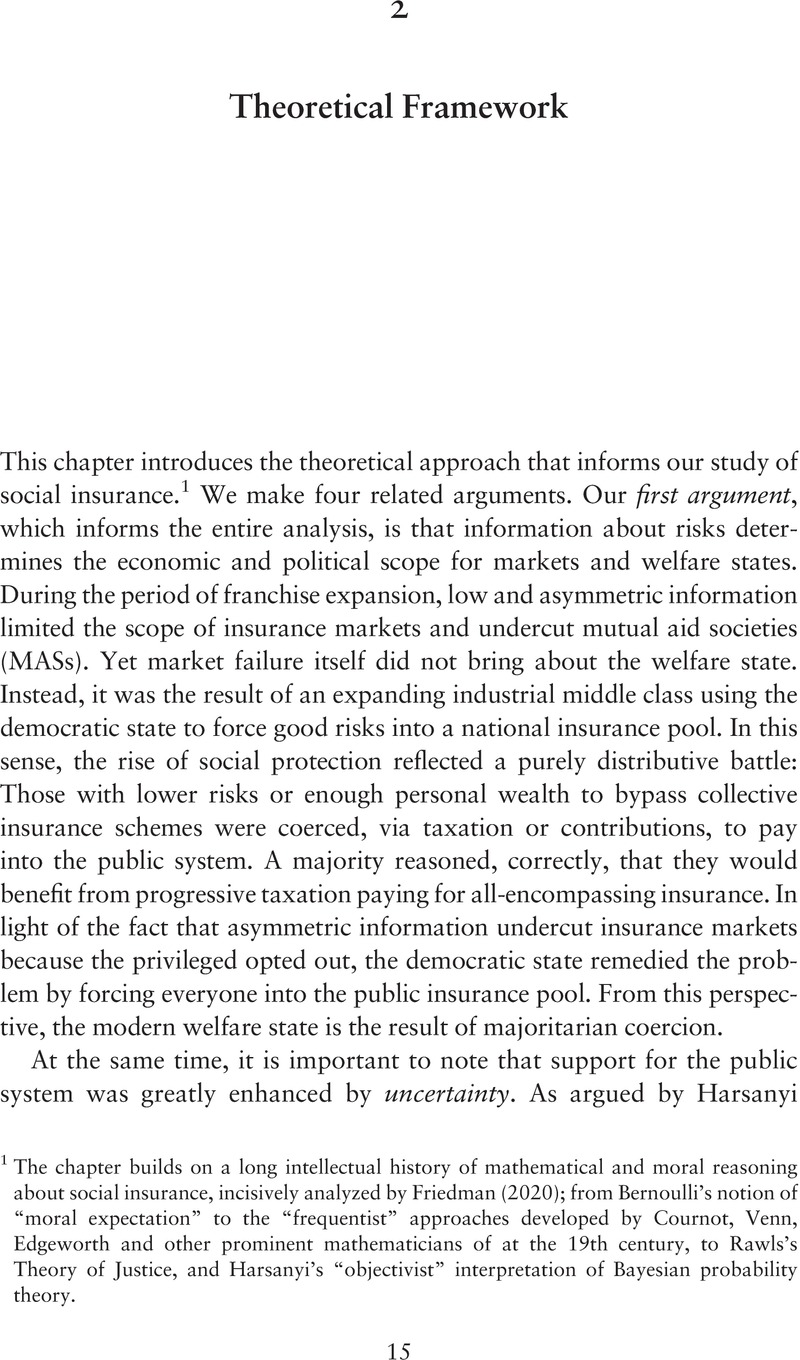Book contents
- Big Data and the Welfare State
- Cambridge Studies in Comparative Politics
- Big Data and the Welfare State
- Copyright page
- Dedication
- Contents
- Figures
- Tables
- Acknowledgments
- 1 Introduction
- 2 Theoretical Framework
- First Argument: Information, Market Failure, and Democracy
- Second Argument: The Time-Inconsistency Problem
- Third Argument: Preference Formation
- Fourth Argument: The Role of Regulation and Government Partisanship
- Summary
- Appendix 2.1: Graphical Representation of the Pooled Equilibrium with Private Information and Adverse Selection
- Appendix 2.2: Satisfying the Insurer’s Balanced Budget Constraint
- 3 A Brief Analytical History of Social Protection
- 4 Private Markets for Life and Health Insurance
- 5 Credit Markets
- 6 Labor Market Risks
- 7 Conclusion
- References
- Index
- Cambridge Studies in Comparative Politics
Appendix 2.2: - Satisfying the Insurer’s Balanced Budget Constraint
from 2 - Theoretical Framework
Published online by Cambridge University Press: 25 May 2022
- Big Data and the Welfare State
- Cambridge Studies in Comparative Politics
- Big Data and the Welfare State
- Copyright page
- Dedication
- Contents
- Figures
- Tables
- Acknowledgments
- 1 Introduction
- 2 Theoretical Framework
- First Argument: Information, Market Failure, and Democracy
- Second Argument: The Time-Inconsistency Problem
- Third Argument: Preference Formation
- Fourth Argument: The Role of Regulation and Government Partisanship
- Summary
- Appendix 2.1: Graphical Representation of the Pooled Equilibrium with Private Information and Adverse Selection
- Appendix 2.2: Satisfying the Insurer’s Balanced Budget Constraint
- 3 A Brief Analytical History of Social Protection
- 4 Private Markets for Life and Health Insurance
- 5 Credit Markets
- 6 Labor Market Risks
- 7 Conclusion
- References
- Index
- Cambridge Studies in Comparative Politics
Summary

- Type
- Chapter
- Information
- Big Data and the Welfare StateHow the Information Revolution Threatens Social Solidarity, pp. 42 - 43Publisher: Cambridge University PressPrint publication year: 2022

